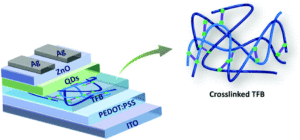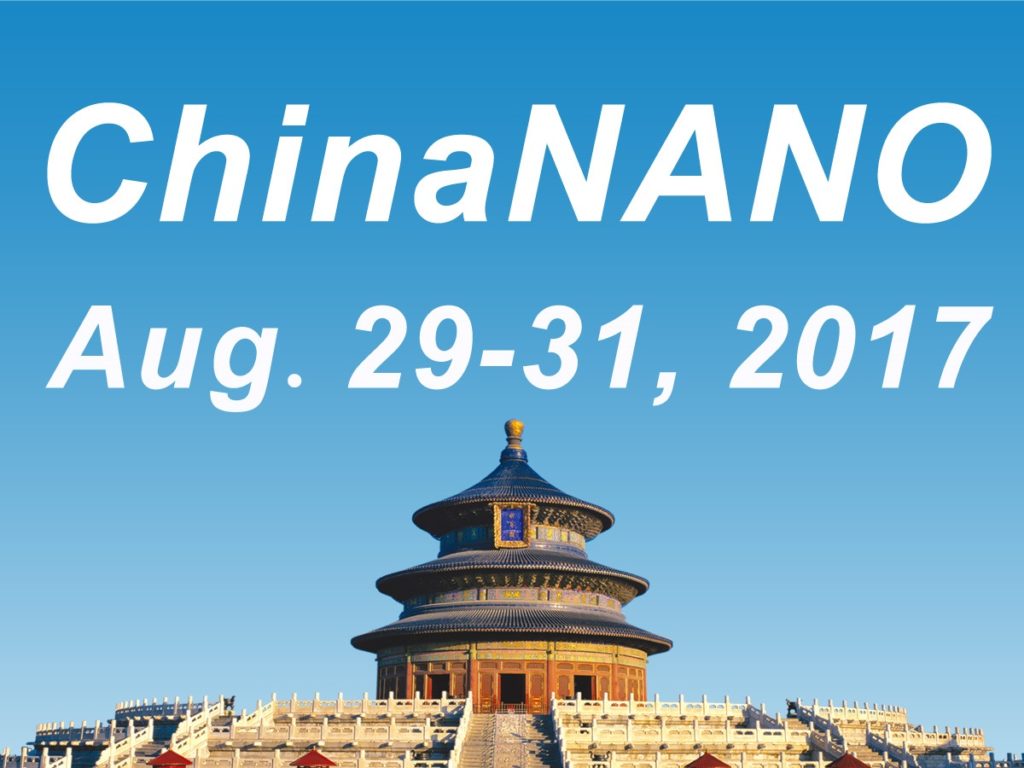A new photo-induced polymer crosslinking strategy has been used to produce optoelectronic devices with improved performance by a group of Chinese researchers. This has allowed quantum dot LED devices to be fabricated on flexible plastic substrates as the scientists can avoid high temperature thermal annealing.
Developed at Soochow University and Shanghai Jiaotong University, the researchers believe this crosslinking strategy provides an excellent general method for improving film quality in solution-processed multi-layer LEDs and optoelectronic devices.
The improved efficiency of the devices has been ascribed to superior film surface morphology of the device layers, as the range of non-orthogonal solvents able to be used for solution processing is greatly broadened due to layer crosslinking. The device is based on a hole transport layer of conjugated polymer poly[(9,9-dioctylfluorenyl-2,7-diyl)-alt-(4,4’-(N-(4-butylphenyl)))] (TFB), which is crosslinked with a bifunctional benzophenone, with the crosslinked hole transport layer device giving a 2 times higher efficiency than the device without layer crosslinking.
Fig. 1. New photochemical crosslinking method enables fabrication of novel all-solution-processed multilayer optoelectronic devices to improve device performance using both orthogonal and non-orthogonal solvents.
Read the article:
Crosslinked conjugated polymers as hole transport layers in high-performance quantum dot light-emitting diodes
Yatao Zou, Ying Liu, Muyang Ban, Qi Huang, Teng Sun, Qing Zhang,* Tao Song* and Baoquan Sun*
Nanoscale Horizons, 2017, DOI: 10.1039/C6NH00217J
Alexander Cook is a guest web writer for the RSC journal blogs. He is a PhD researcher in the Perrier group at the University of Warwick, focusing on polymer materials and their use in various applications. Follow him on twitter @alexcook222












